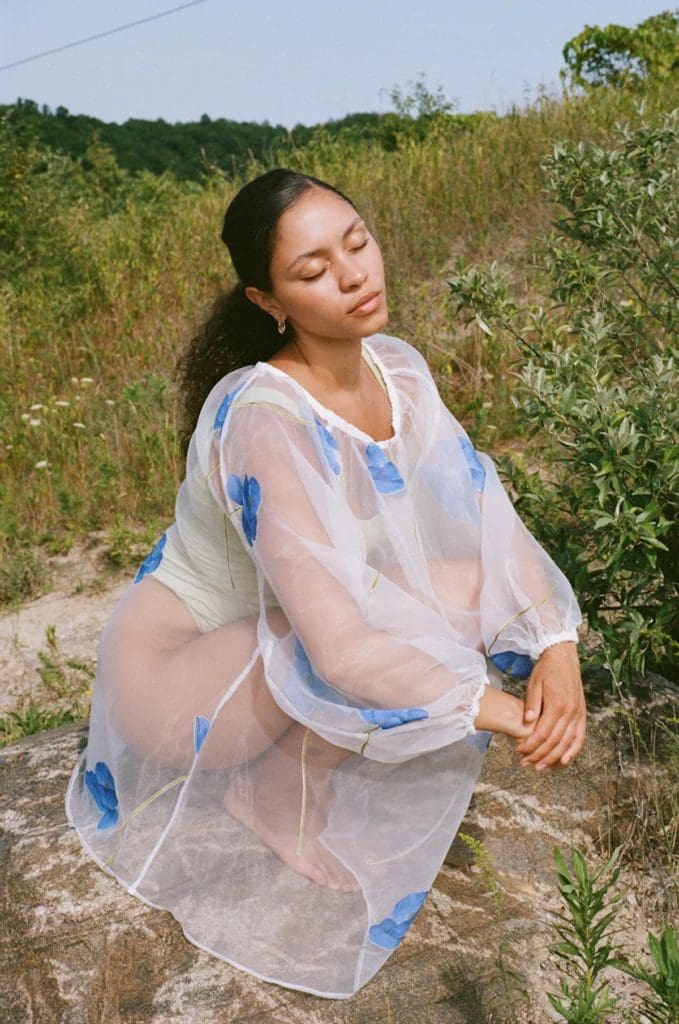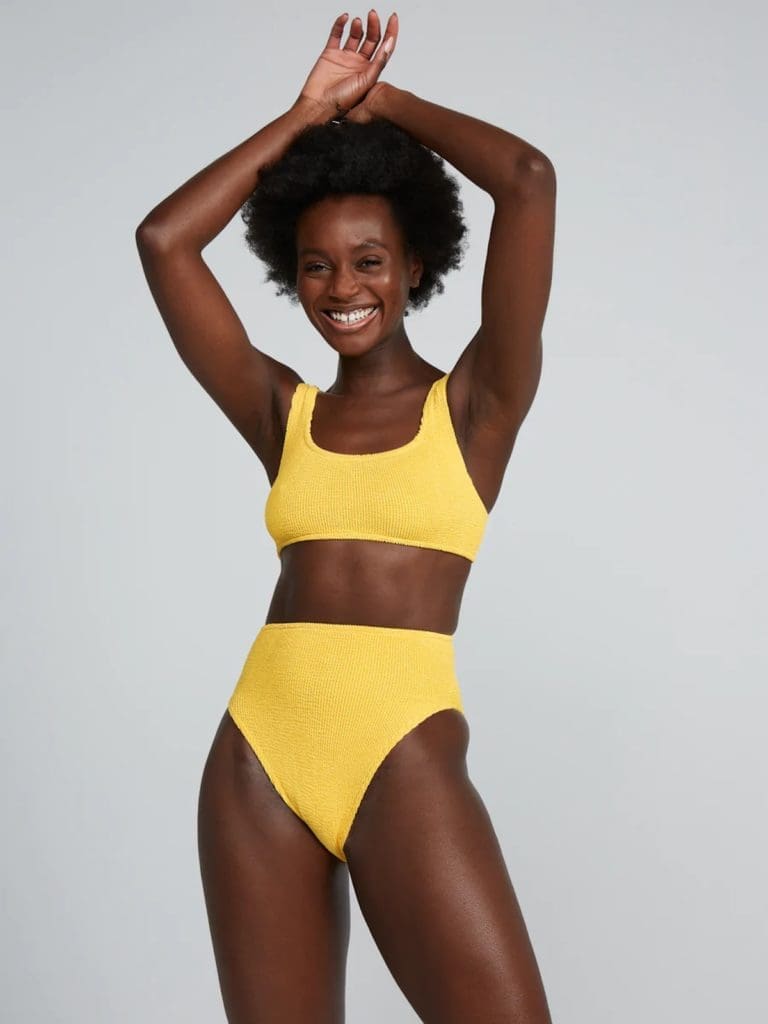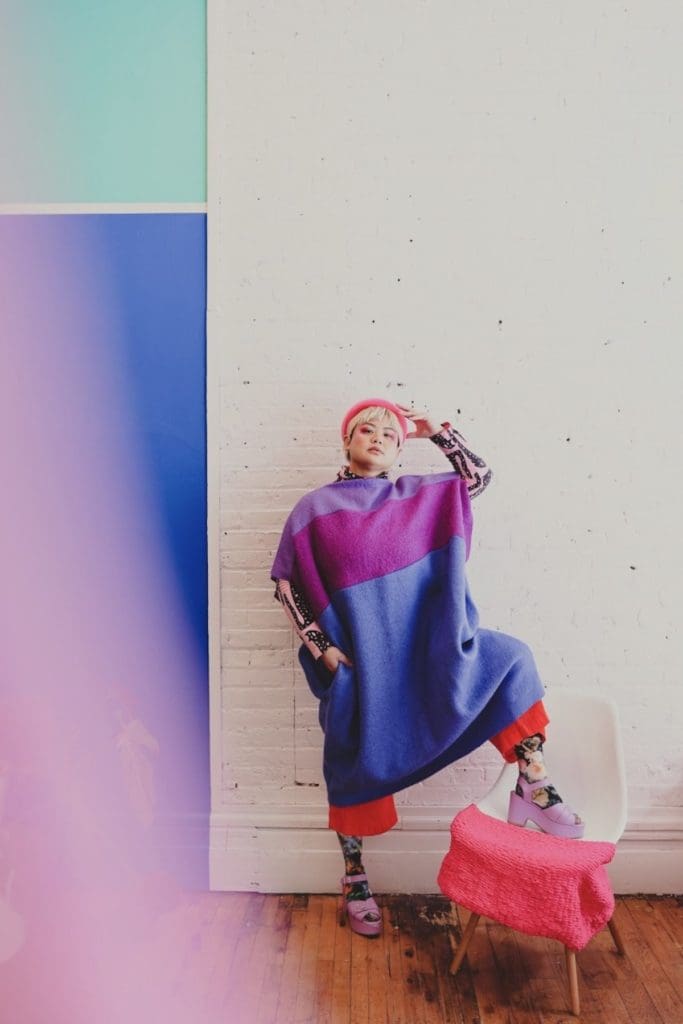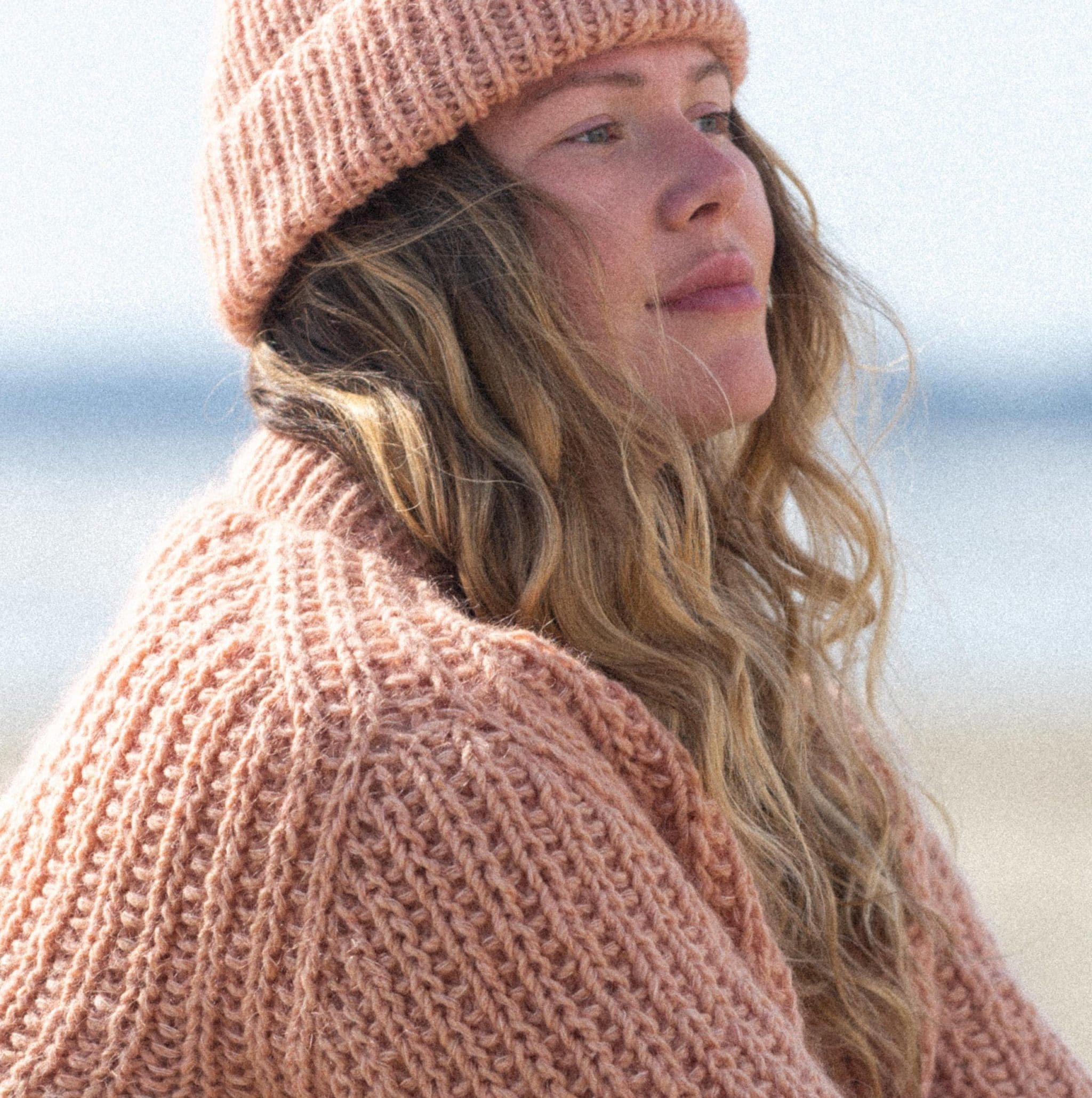Sarah Millman’s one-size dress design originated as much out of necessity as it did from practicality. “The first dress designs I made were to accommodate pregnant dancers in a short film, so the pieces had to be easy to move in, elegant and comfortable,” the Toronto-based designer says.

The creation—a loose-fitting sheath dress with an elasticized neckline and flowing sleeves—was shaped in a way that would allow it to accommodate sizes zero to 16, though Millman notes she’s since received feedback from shoppers who say it can fit larger sizes, as well. That early design helped to form the framework for her brand, The Local Woman, which specializes in offering small-batch styles that are made in Toronto, often using deadstock and upcycled fabrics.
“I loved one-size-fits-many because it felt democratic. I also was so new to having a clothing line, I was intimidated by anything too tailored or that needed pattern grading,” she explains.
Launching a full-fledged clothing line amid the first summer of the pandemic, Millman found the comfortable-yet-chic one-size-fits-many dress design proved a popular alternative to the loungewear that was a style staple for those who were sticking close to home.
“When I decided to develop those prototypes into an actual clothing line, it was the first summer of the pandemic, when people were in need of comfort first, but also some cheerfulness and to feel good,” she says. “Sweatpants are amazing, and I feel like we all revolted against anything too restrictive or uncomfortable, but by the summer I could sense people were looking for a bit of glamour or specialness back in their wardrobes.”
While Millman has since introduced sized styles to her range, she hopes her designs continue to help people focus less on a numerical size tag—and more on how a garment makes them feel. “People have told us they feel beautiful and special in the pieces, which is music to my ears,” she says.
Fit With Flaws

Prior to the 1940s, clothing sizes for girls were based on age. According to a 2014 article in Time magazine titled The Bizarre History of Women’s Clothing Sizes, this meant a size 16 was for a 16-year-old, 14 was for a 14-year-old, and so on. Women’s sizes were based on bust size—an approach that proved inadequate and flawed.
From there, the history of sizing has unfolded in a bizarre series of developments ranging from size models gleaned from paid participation in surveys conducted by the U.S. Department of Agriculture in an attempt to create a standardized system in North America, to the rise of “vanity sizing” by brands who were eager to smooth the egos of shoppers who preferred to fit into one size versus another. This inconsistency among clothing brands has left many consumers frustrated and confused—two emotions Millman says are helping to grow interest in one-size options.
“I think people are sick of feeling restricted by their clothing, and retailers are hearing that,” she muses. “One size generally means ease of wear, and I think that’s so important to make people feel confident and beautiful.”
A Personal Experience

A growing number of one-size fashions are appearing on the market today, led by small fashion brands, ranging from swimwear from the U.K.-based brand Youswim, with its suits that fit sizes two to 14, to hand-knit sweaters from the Sooke, B.C.-based brand Olann Handmade. For Winnipeg-based designer Miriam Delos Santos, the push toward one-size styles was inspired by her own desire to find a dress that didn’t prompt any personal sizing stress.
“I get stressed out thinking about my size and the range I fit into,” the founder of Hello Darling Co. says. “I have always loved sizing models which veer away from using numbers sizing or the confusing S/M, M/L, etc. As a woman, my body is constantly fluctuating and it’s very easy to be one size one month and another the next. Moving to a one-size model simplifies this. And it diversifies and includes so much more of a demographic of people who can wear your clothing.”
In order to suit her own preference for a wear-everywhere dress that would fit no matter where her body was at, Delos Santos created the one-size Nati Dress a few years ago. The design, a column dress with cap-style sleeves fits sizes two to 22, according to the designer.
“Mainly because I love a good comfy and roomy fit, something that doesn’t make me feel too constricted or restrained in any way,” she explains of the inspiration for the design. “I loved how the Nati wasn’t something I had to put much thought into how my body would feel wearing it as I purposely designed it to drape in a flattering and structured way. It wasn’t hiding my body, it was bringing a new modern silhouette to it.”
Delos Santos began posting the dress on Instagram—and received a cascade of feedback from people of all shapes and sizes who were looking for a similar style. It was then she knew she had a hit. “Something I love seeing is, although the cut of the dress is the same as a one size, people have styled and accessorized it according to their own personalities and aesthetic,” she says of the dresses, which are often one-of-a-kind pieces made using remnant and deadstock fabrics. “Each look is so unique and provides a base garment for personal expression.”
Benefitting The Bottom Line
In addition to attracting customers who are looking for a one-size option, for small brands, a one-size approach also helps minimize production costs. “Every single size that is graded costs money, because you have to develop that size with a sewist, and it can really add up,” Millman explains.
As sizes get smaller and larger, patterns often have to be reworked completely in order to get the proportions of the garment just right. “It takes a lot of time and resources to offer a huge range of sizes,” she adds.
But a one-size approach also has its downfalls. “Some challenges are that it sometimes doesn’t work for the people on either end of the size chart,” Millman says. “For very petite people, the arms might be too long, or the fabric overwhelms them. For people on the larger side, maybe it fits differently in the way it’s meant to drape.”
In an attempt to mitigate this, both designers interviewed noted they’re happy to consider requests for sizing expansions or customizations. “Our bodies are so unique and different, so I appreciate accommodating special requests and offer, at no extra charge, custom measurement fittings, whether it be adding a couple inches to the all-around pattern, taking it in and/or lengthening or shortening,” Delos Santos says. “One-size garments won’t fit everyone perfectly. This is why having a thoughtful approach to having the ability to customize clothing is an important offering.” —Aleesha Harris

Be the first to comment